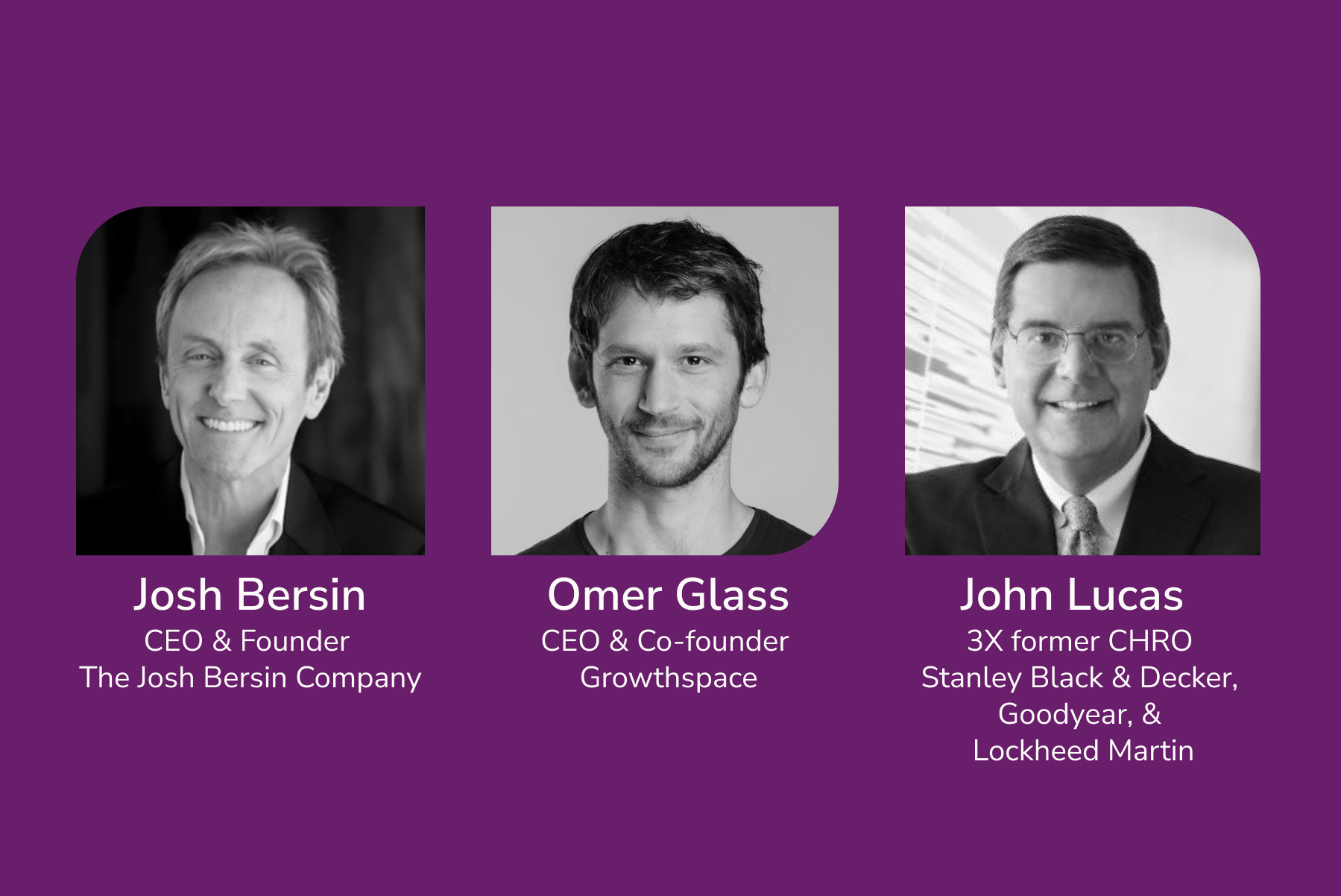True or false: Helping employees discover their ideal career path is for do-gooders. Or here’s another one: The benefits of L&D programs are only felt when the acquired skills are actually applied. What if we take it a step further: Once somebody leaves a company, they become irrelevant to the organization.
There is a single answer to all of these statements, and it might not be the one you assume. First, you need to zoom out and look at the big picture–i.e., career paths.
What Exactly Is Career Pathing?
Career pathing is the process of outlining the advancement of an employee towards a long-term professional goal. It is a type of roadmap of the roles an employee must hold on their route to landing a specific job. This does not always mean upward movement through a hierarchy, because many companies have a flat organizational structure. It can also mean evolving to more advanced levels of responsibility, skill, and salary.
Career pathing is individualized by nature. Different workers have varying competencies, ambitions, work/life preferences, etc., so no two career path programs are identical.
But Wait–Isn’t Career Pathing an Employee’s Concern?
As for the three statements posed at the outset, the answer is the same for each: FALSE. Implementing a career path program is advantageous to almost any organization–not to mention the value it brings to the worker. And yes, that’s true even if certain acquired skills are never used while the employee works for the company. Here are some of the reasons why:
Facilitates Hiring and Succession Planning
Employees who stick to their career path are an ideal source for internal hires. A supportive HR department will track their career pathing candidates over the course of their development and so have a ready pool of candidates who have been trained to fit pre-defined roles.
Boosts Retention
One of the most common reasons for employees to seek other work is that they feel a lack of investment by their employer in their career. According to the Work Institute, the leading reason for employees to quit is because they are not satisfied with their careers, with lack of development opportunities being a leading factor for this. The dedication that a company shows by providing free training opportunities convinces employees to stay longer at their current job. This is (at least in the short term) regardless of the eventual promotion of the worker based on their career plan.
Leads to Loyal Alumni
Few companies can accommodate the whole career path of every employee, simply because the number of senior positions is limited. However, by assisting workers to meet their professional goals, companies will benefit from their loyalty, even when they are employed elsewhere. This can include connections, hiring referrals, and even future sales and contracts.
A Note on Career Mapping
“Career pathing” refers to a more traditional practice of designing a linear course for employees. In contrast, a career map shows various routes that a worker can take. This might involve working in several roles that all lead to the same goal or the various routes that an employee can take to different places in the organization. For instance, a marketing employee might have the goal of either moving to sales or staying in the same department. A career map will illustrate how to reach both positions.
There are actually two types of well-known tools that HR professionals can use to outline career paths and career maps.
- A career ladder shows how the employee can progress in a straight line, i.e. a career path. Usually, career ladders are closely connected to moving up in the hierarchy. As discussed below, not every employee feels the need to be constantly reaching higher levels of responsibility, so perhaps a career ladder is not the best framework to use for them.
- A career lattice allows for the employee to move sideways in the company. For instance, they might be working in finance and want the experience of dealing with billing, bookkeeping, and collections, all in preparation to reach a higher professional goal somewhere down the road.
The 5 Steps of Supporting Employee Career Plans
1. Background Work
Before suggesting a career path, the employer must know what job positions it needs. Getting the information can be time-consuming, but is practical beyond career pathing. Identifying current and future positions is vital for strategic planning and plugging skill gaps. In short, HR departments should:
- Ensure that organizational charts are complete
- Discuss future staffing and skill requirements with strategy managers
- Build a ‘shopping list’ of potential vacancies according to strategic requirements and expected turnover, including succession
2. Profiling
Next, HR should research the details behind each position. What skills, educational history, and work experience are needed for each? What are the preceding roles and success factors that enable an employee to reach higher levels in the organization? The completion of this process will result in a profile for each job type, which is essential for the next step.
3. Matching
With profiles in hand, HR should then meet with managers to match positions with employees. Managers are familiar with both the talents of their staff and what is required to move up in a company, and so they are an ideal starting point.
After determining relevant employees, HR should meet with the candidates to:
- Explain career pathing and how they can benefit
- Inquire as to the goals and commitment level of the employee
- Work together in outlining the skills, advancements, and responsibilities that the employee will require to get from their current position to their stated goal
Undoubtedly, the employee will need to contemplate the move and consult with ‘stakeholders’, which is why the matching phase typically takes several meetings.
4. Upskilling and Usage
With both the employee and the skill requirement in hand, the HR or L&D department should organize and implement learning and development programs according to the individual’s next step in the career path.
Once upskilling is completed, the challenge is to wait until an actual position in the company becomes available. If this doesn’t happen soon, then the HR department, or even a manager, should arrange for the employee to exercise their skills. This could be in an unofficial capacity or by rotating with another worker who is cross-training. In this way, the worker can minimize the loss of the learned skill that happens over time.
5. Follow-ups and Tracking
As the organization evolves, so do skill requirements. Chances are that the strategy and/or skills that affected an employee’s career track a few years ago might no longer be relevant. It is therefore necessary to update career paths once in a while.
Tracking a worker’s progress along the intended path is important. This will serve to keep the HR department apprised of an employee’s current abilities in case they match an opening in the company. Additionally, if a worker is not keeping up with their career plans, HR can investigate and perhaps provide advice.
The Importance of Employee Input and Career Path Type
It’s essential to pay close attention to what the employee wants – and if they can achieve that goal – during the matching phase of career pathing. When your organization needs workers in certain areas, you might be tempted to nudge employees in that direction. But you should temper this approach with awareness of job fit and career goals.
Job Fit
“Job fit” refers to how well an employee performs or will perform, in a certain role. Through interviews, testing, and speaking with managers, you should get a good impression of:
- Skills – with knowledge of the hard and soft skills required for a certain career path, you should determine what abilities the employee already has, and if they might need professional development training programs.
- Personality – even with the right skill set, not everyone is meant to achieve certain professional development goals. For example, perhaps an employee does not want the responsibility that goes along with the role that they might get to years from now.
Career Goals
Closely related to the factor of personality in determining job fit is career goals. Let’s not forget that the career direction that an employee might eventually take can be very different from their objectives today. As people grow older, their priorities and commitments change. Discussing what a particular job will demand five or ten years from now is essential to designing an optimal career path.
We’ve outlined below the four basic types of career paths. The question you should ask your employee is, “how do you see yourself five years down the road?”
- Professional – Being a professional is not always connected to being a leader (see below). Instead, it is more about a level of skill development that puts the employee at the top of their peer group when it comes to the formal tasks of their role. A professional path might be created for a production line worker who wants to be an expert in every facet of their company’s manufacturing process, or for an accountant who can lead a complex merger. Employees who are aiming for a professional career path should be ready for the regular pursuit of new skills while striving for measurable perfection in their role.
- Leadership – We often used to think of leadership as being connected to moving up in a company. But that is no longer strictly the case. In many industries, we are seeing a trend towards flatter hierarchies. In other words, leadership is more about taking charge, giving advice, being supportive, and acting as a role model than it is about where you are in the hierarchy. Leaders need to have excellent soft skills such as communication, problem-solving, and empathy. But they must also be prepared to “put themselves out there” by taking the initiative and using their personality to achieve organizational goals.
- Balanced – With more awareness of the effects of workplace stress, some employees choose a career path that allows them a way to balance various priorities. These workers are looking for stable positions and clear roles, and often like the friendly atmosphere that describes some organizational cultures. People who prefer a balanced career path usually want eventual promotion but are not interested in working long hours and taking extensive L&D courses to get there. Many workers with this career path specialize in company-specific knowledge gained from long years with their organization.
- Development – The era of staying with the same company for an entire career is over; “job hopping” is the rule today. Some employees build this idea into their professional development goals. They move from company to company to gain experience and new skills. This type of worker is a good fit for organizations that prefer external hiring. In addition, they might end up as a “boomerang employee” or otherwise help out as a loyal alumnus. Obviously, these employees don’t stick to a long-term career plan. However, they are serious about gaining experience and new skills, and will work hard for short periods to gain good references for their next job.
Let Growthspace Lead Your Career Pathing Initiative
Career planning is as personalized as the person in question, as are the L&D programs that lie at their core. It can be a challenge for companies to find the right experts to match the unique development needs of each employee.
But with Growthspace, organizations of any size can connect with world-class trainers, experts, and mentors. Growthspace’s L&D platform supports rapid and effective career skills training through sprint-based sessions that reduce interference with busy schedules while achieving desired results.




